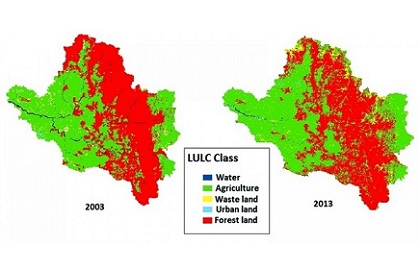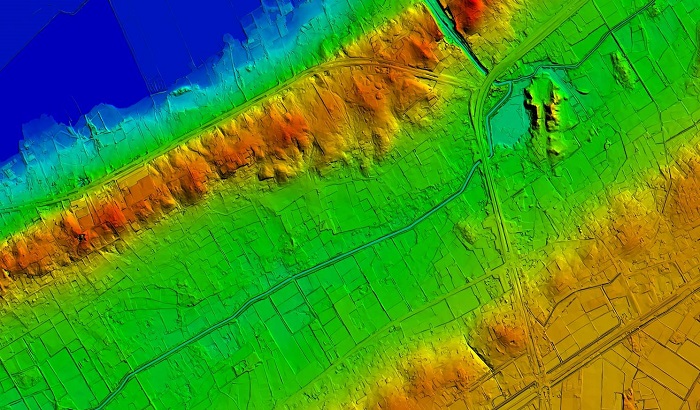3D LiDAR
Technical progress in the dynamic field of GIS persistently pushes the limits of spatial intelligence. One such groundbreaking development that has necessarily transformed how we perceive and evaluate geospatial data is 3D LiDAR technology. A vital part of the GIS industry, Light Detection and Ranging, or LiDAR for short, offers unmatched precision and depth perception.

It discovers the intricacies of 3D LiDAR, looking at its applications, data classification techniques, and revolutionary impacts on the GIS sector. LiDAR is essentially a remote sensing instrument that uses laser light to detect distances extremely precisely. The device shoots laser pulses in the direction of the Earth’s surface, timing how long it takes for the light to return after striking various objects. LiDAR creates accurate three-dimensional images of the land, buildings, and vegetation by gathering and interpreting these data points. Conventional LiDAR systems collect data in a horizontal plane while operating in a two-dimensional environment. However, the introduction of 3D LiDAR has brought in a new age of spatial awareness, making it possible to acquire comprehensive data regarding the vertical dimension as well. LiDAR technology’s capabilities have been greatly improved by this progression, making it a vital tool for a variety of applications.
Application in GIS

Topographic Mapping
The high-resolution elevation data from 3D LiDAR is very valuable for topographic mapping. Specifically in complex environments, traditional approaches typically fail to capture the minor nuances of the ground but 3D LiDAR makes it possible to create extremely specific and exhaustive topographic maps by measuring surface features and ground elevation.

Urban Planning
3D LiDAR captures vegetation, constructions, and infrastructure with remarkably high precision, which helps the creation of in-depth urban models because understanding the vertical dimension in urban planning is critical sometimes. This facilitates the visualization and analysis of urban environment spatial layout by city planners, leading to better-informed decision-making.

Forestry and Environmental Monitoring
An important part of environmental monitoring is assessing the health and structure of the vegetation. 3D LiDAR shines when it comes to collecting exact data on forests, such as tree height, canopy structure, and ground coverPlanning conservation efforts and evaluating biodiversity benefits from environmental data.

Infrastructure Supervision
Three-dimensional LiDAR technology is quite useful for the assessment and maintenance of vital infrastructure, like electricity lines and bridges. Engineers can calculate the structural integrity of infrastructure assets and more efficiently schedule upkeep tasks by creating intricate three-dimensional models.
Categorization Methods
3D LiDAR systems collect millions of points as raw data, where each point represents a unique location within the surveyed area. However, this dataset involves a lot of information that is not relevant to the analysis. To extract useful information, LiDAR data classification algorithms are used. These algorithms categorize LiDAR points into different classes based on their characteristics.
Key LiDAR data classification methods that are often employed in the GIS sector are as follows:
Sorting of Ground and Non-Ground: LiDAR point segmentation into ground and non-ground classes is vital for multiple applications. The Earth’s surface is represented by ground points, while other objects, flora, and buildings are instances of non-ground points. Terrain modeling is based on algorithms that differentiate between ground and non-ground objects through metrics like slope and point density.
Building Extraction: For infrastructure management and urban planning, buildings must be identified and extracted from LiDAR data. Accurate 3D building models can be made by using classification algorithms that distinguish between ground, vegetation, and building classes based on the geometry and height properties of LiDAR points.
Classification of Vegetation: Classifying LiDAR points associated with trees and other vegetation is vital to evaluate the structure and health of the vegetation. To discriminate between different vegetation kinds, algorithms take into consideration factors like height, density, and shape. For ecological research, forest management, and environmental monitoring, this information is important.
Elimination of Noise and Artifacts: Analysis and modeling can be distorted by noise and artifacts existing in LiDAR data. The objective of classification systems is to eliminate these superfluous points, promising an accurate and pure final dataset. To detect and eliminate noise, sophisticated algorithms make use of geometric properties and statistical methods, which increases the data’s overall reliability
Effects and Upcoming Changes
How geographical data is collected and scrutinized has been entirely transformed by the incorporation of 3D LiDAR technology into GIS operations. Its capability to produce precise and in-depth three-dimensional representations has formed new opportunities for innovation across a variety of sectors. The use of 3D LiDAR in GIS has a bright future ahead of it as technology advances.

Integration with Artificial Intelligence (AI)
More developments in GIS are expected as an outcome of the partnership between 3D LiDAR and AI. LiDAR points can be automatically classified by machine learning algorithms, increasing the speed and accuracy of data processing. Quicker analysis and the extraction of more complex data from LiDAR datasets are made possible by this connection.

Improved Sensing Technology
Future sensor technology development should lead to LiDAR systems that are lighter, more reasonably priced, and more compact. Thanks to these developments, 3D LiDAR will be more broadly available for consumer electronics and smaller-scale projects, among other uses.

Real-time Data Processing
A mounting number of sectors are requiring instantaneous data processing. Future advancements in 3D LiDAR technology might concentrate on accelerating the gathering, processing, and supply of data for analysis. This will be especially helpful for applications like emergency response and driverless cars.
In the GIS sector, 3D LiDAR technology has changed the game by offering previously unattainable insights into the spatial aspects of our reality. Its uses are incredibly diverse, ranging from environmental monitoring to urban planning, and they are completely changing the way we see and use geographic data. The integration of LiDAR technology with cutting-edge classification methods and other technologies such as artificial intelligence (AI) holds great promise for expanding the frontiers of spatial intelligence. With 3D LiDAR in GIS, there is a bright future ahead of us. It will open the door to more precise, effective, and creative ways to solve the difficult problems in our dynamic, ever-changing environment.












.png)



.png)
.png)










.png)










